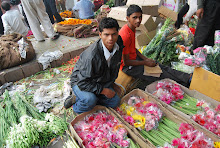‘Sainik Samachar’ celebrates its centenary with a vivid collection of news and images from a century of military history
Few times in the recent past have the Indian Armed Forces been held in as high regard as they are right now. The special force operations during the Mumbai terror strike, the anti-piracy operations off the coast of Somalia and the brouhaha over pay increases have kept the men in uniform continuously in the public consciousness. One cannot ask for a better time, therefore, to launch Soldiering On, a well-produced coffee table book to commemorate 100 years of Sainik Samachar, the Armed Forces’ news journal.
The book carefully and painstakingly chronicles the evolution of the Sainik Samachar from its launch in 1909 as the Fauji Akhbar—through various wars, a partition and a change in India’s status from domain to republic to, finally, its current avatar: A fortnightly published in 14 languages and read by thousands of soldiers and ex-servicemen.
Although positioned as a history of the Sainik Samachar, Soldiering On cannot help but become a visual history of the Indian soldier. This means that the book is illustrated with superb pictures infrequently seen outside military circles. The Armed Forces, in the sense of a national unified entity, may only be a few decades old. But as Soldiering On testifies, they have seen their fair share of trials and tribulations. The images in the book, even the ones blurred by age and poor preservation, do justice to these tales.
Two things stand out about the book. One is its balanced view of protagonists: The soldier, the politician and the passage of time are given adequate importance. So, for every few pictures of an Indian unit marching through pouring rain in World War I France, there is one of Indira Gandhi speeding up a ramp into a warship, officers trailing behind, and yet another of milling crowds around the Parliament building in New Delhi on 15 August 1947.
Second, the compilers of the book throw open the archives of the Sainik Samachar to readers and let them draw their own historical conclusions. This, from the Armed Forces, no less, shows a candour rare in popular Indian historiography. Without resorting to petty revisionism to show the evils of colonialism and the “British yoke”, Soldiering On sets the tone for its stance early on in its preface: “We leave it to our discerning readers to form their own opinion.”
Images of Jallianwala Bagh and old Sainik Samachar excerpts denouncing Mahatma Gandhi are left without interpretations or embellishments.
History buffs will enjoy how the book depicts the transient nature of our relationships with neighbours. A poignant picture shows Indian armymen bidding farewell to Pakistani counterparts shortly before the partition of both countries. Later ones show both war and friendship attempts between the countries. One of the final few images is that of armed black-helmeted commandos at Mumbai’s Taj Mahal Palace and Tower hotel.
All this might leave you thinking the book is all grim reportage and gritty soldier profiles. But the Sainik Samachar also carried delightful features by popular writers—Khushwant Singh, Ruskin Bond and Mulk Raj Anand (on Indian classical dancing)—and extremely funny cartoons. If the samples in Soldiering Onare anything to go by, the archives of Sainik Samachar should easily have enough material for a compilation of excellent humour in uniform.
Soldiering Onis a classic coffee-table book: Excellent eye candy for a quick flip-through, and plenty of insightful reading when you kick up your heels.
This a listing on my felings about my treks in the mountains and the kind of people who I have met there. The experience is a very spiritual one and it has been great going up into the mountains again and again... The Sunrises and Sun sets are breath taking!




